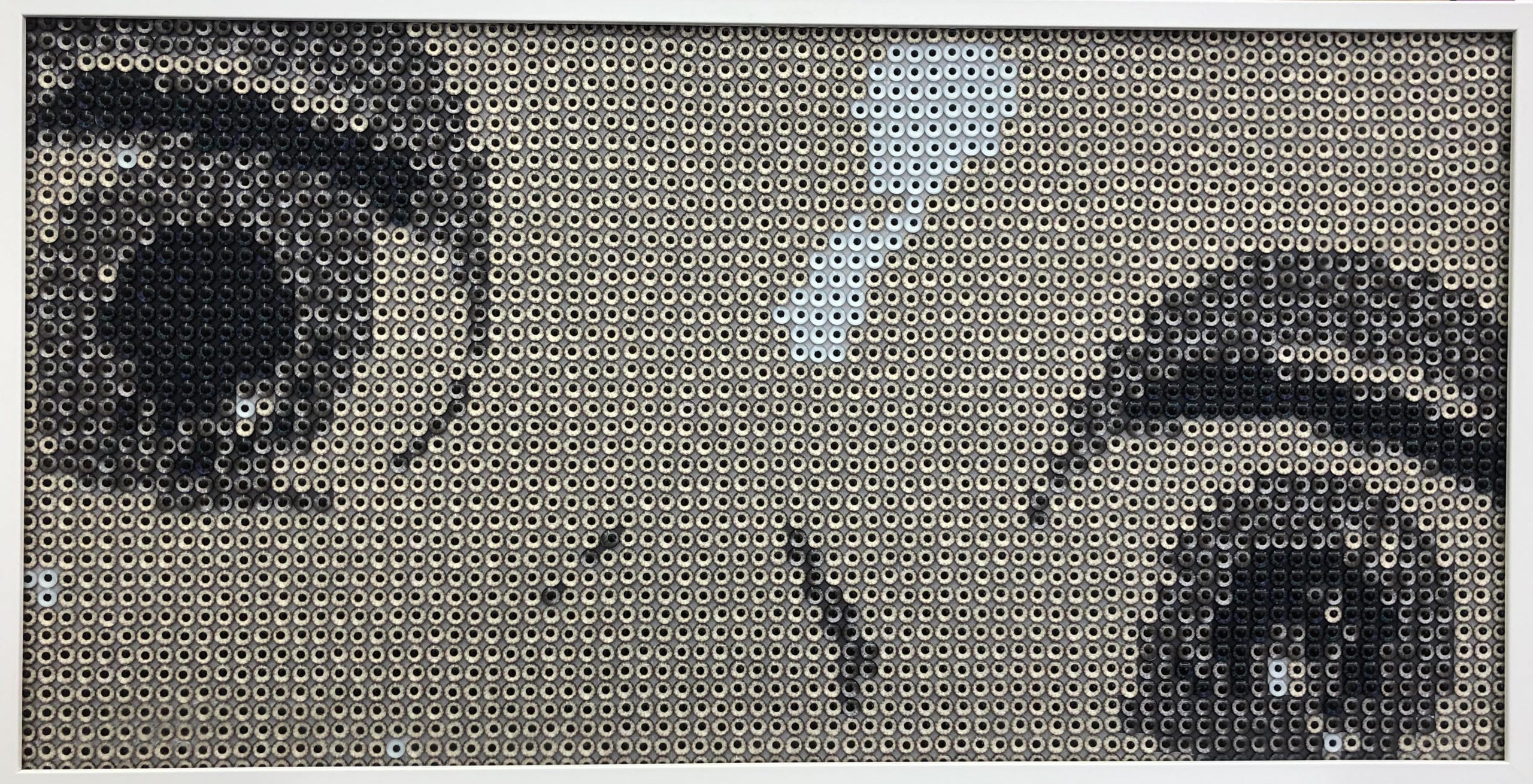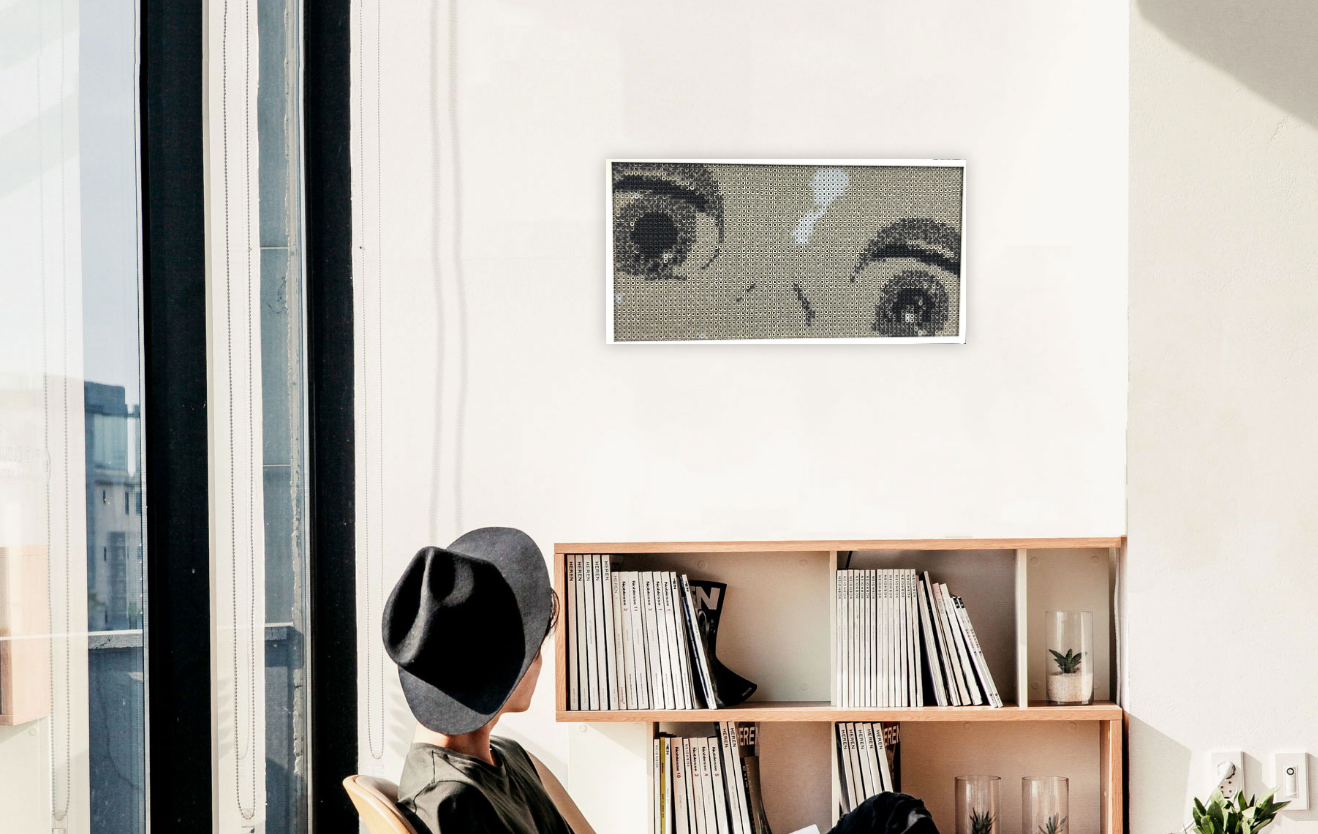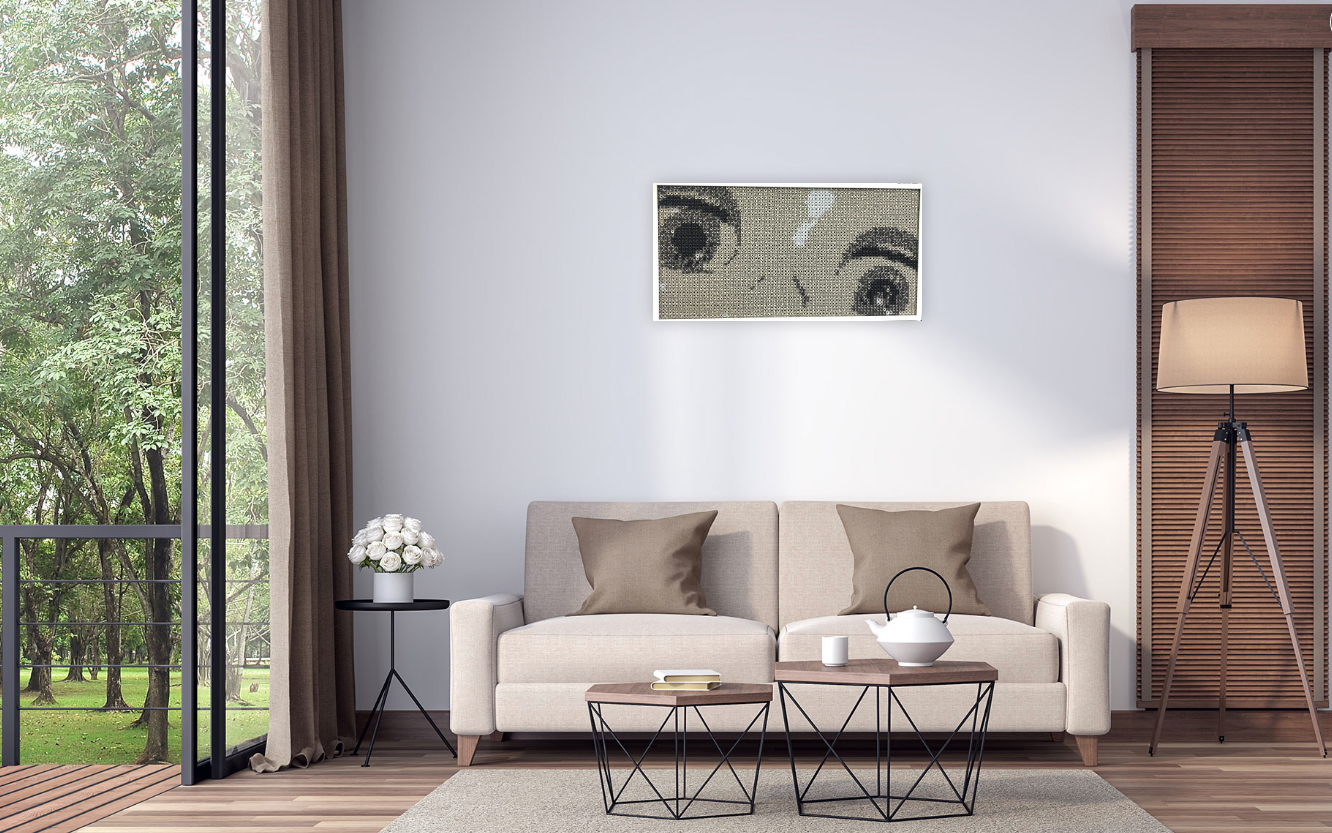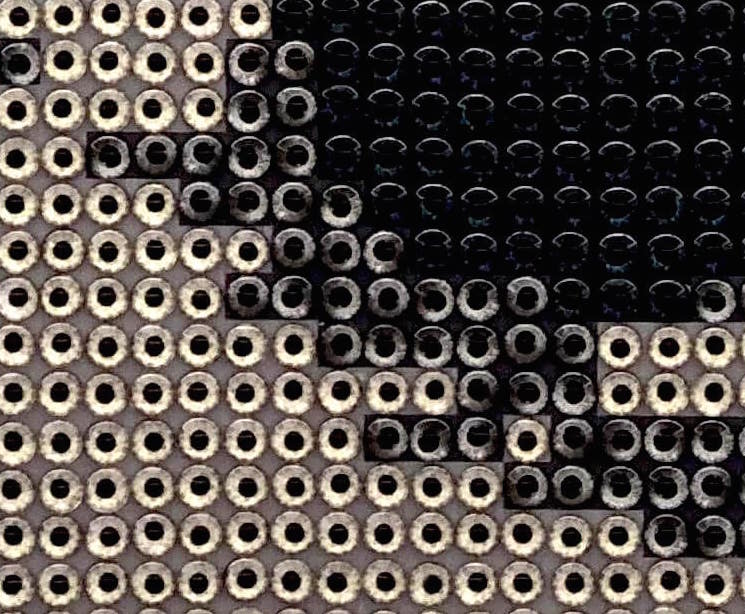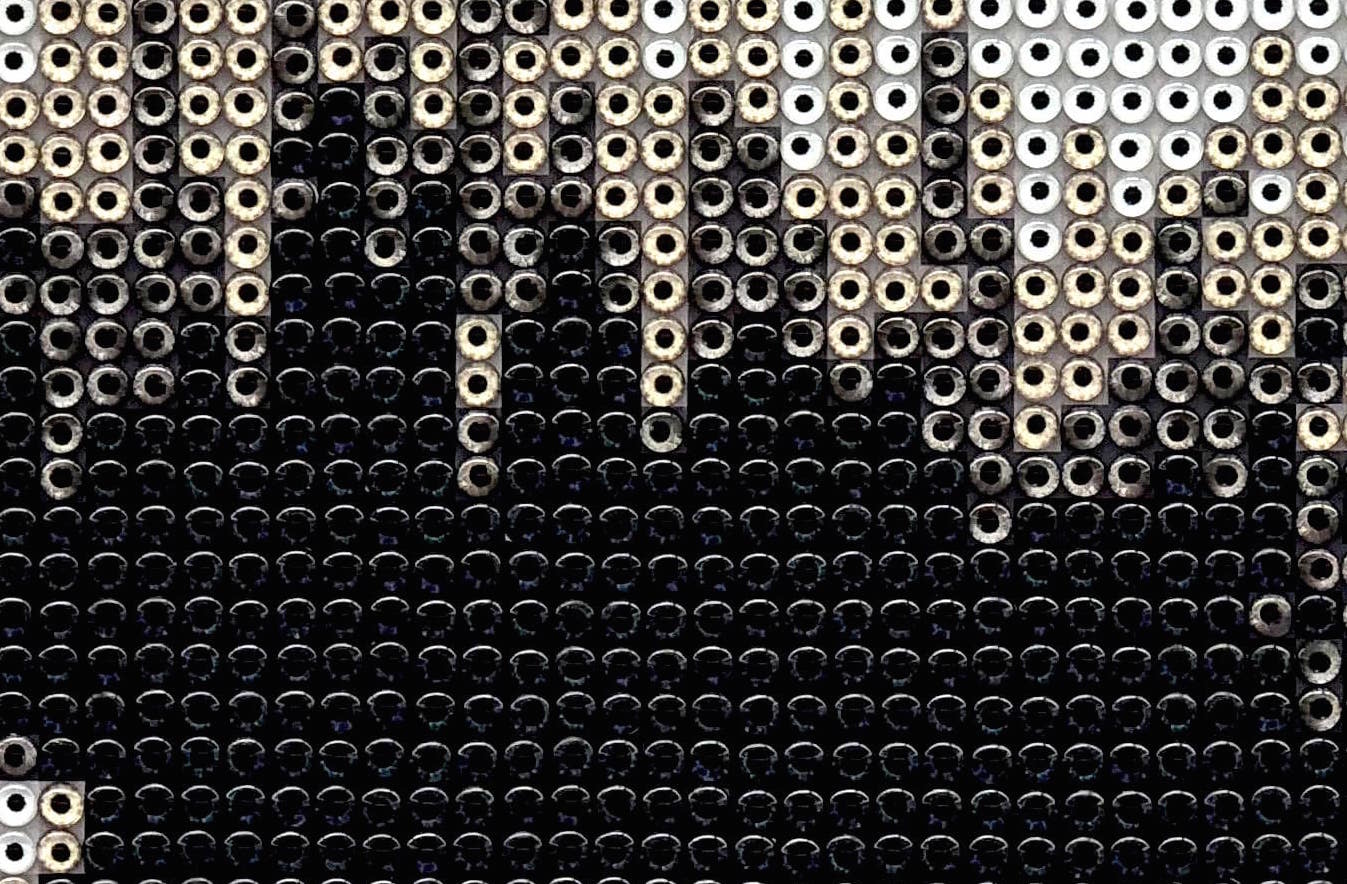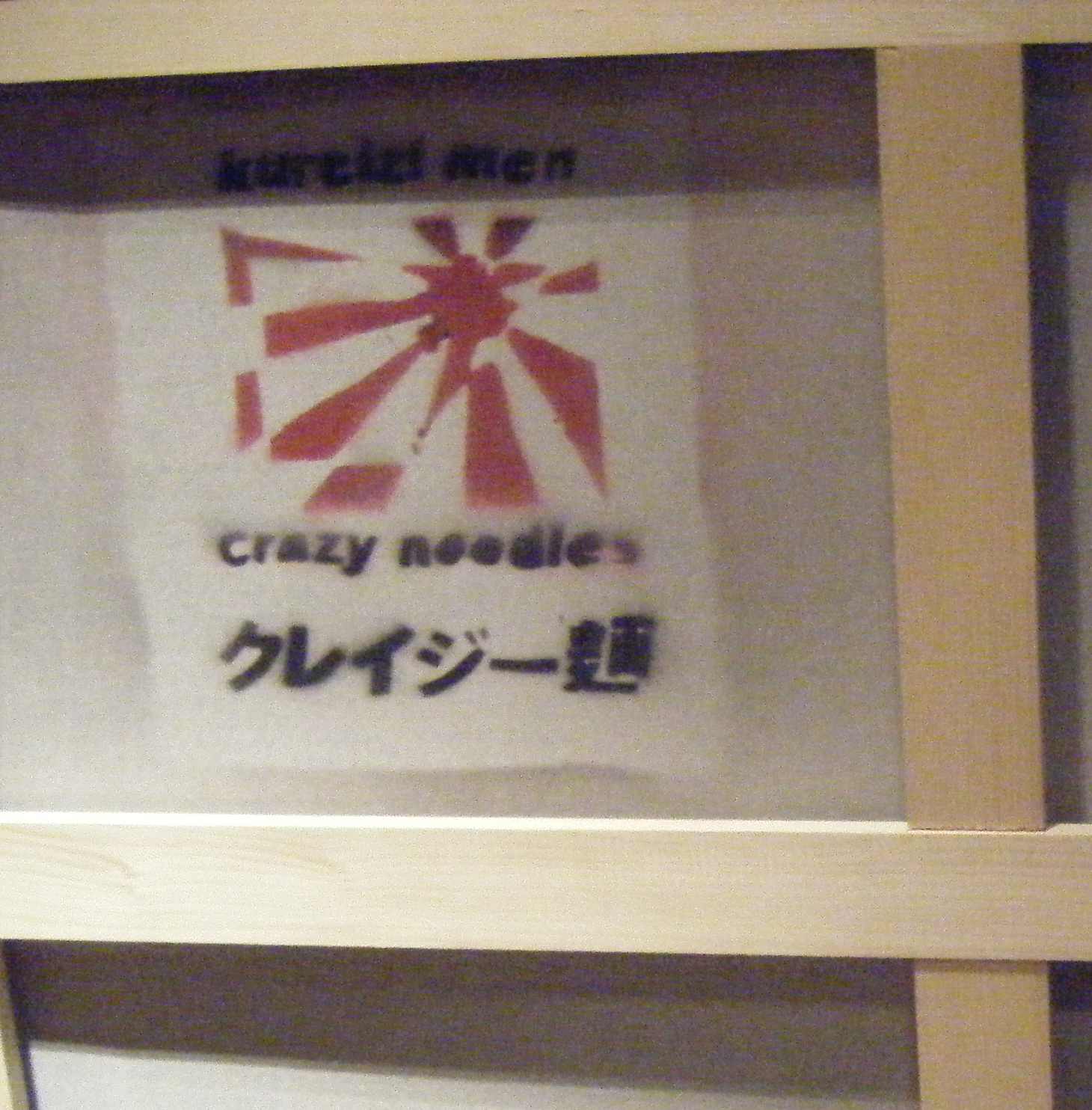The artwork is dated and signed by the Artist & stamped with the logo of the studio of the Artist crazynOOdles on verso of the canvas
In the twilight of his artistic journey, Yoshihiro Fujita embarked on a mesmerizing exploration that transcended the conventional boundaries of artistic expression. His latest series, aptly titled “Spectral Eyes: Doll Glass Manga Mirage,” became a testament to his innovative spirit and a captivating fusion of the ethereal and the tangible.
The inspiration for this series dawned upon Fujita as he sought to infuse new life into his iconic portrayal of Manga eyes. Departing from traditional mediums, he delved into the realm of dolls, each with its own unique set of glass eyes. These delicate orbs, carefully chosen and adhered to his canvases, introduced an otherworldly quality to the familiar expressions of Manga characters.
One can trace the genesis of this artistic endeavor to Fujita’s profound contemplation of the ephemeral nature of human emotions and the transient quality of visual perception. The glass eyes, once part of dolls that often evoke memories of childhood innocence, took on a new identity as vessels for conveying the nuanced emotions intrinsic to Manga characters.
The series unfolded like a mirage, with each canvas presenting a spectral array of Manga eyes that seemed to transcend the physical constraints of the artwork. “Gaze 543210,” the initial piece in the series, showcased the meticulous arrangement of doll glass eyes, each contributing to a harmonious symphony of expressions. The numerical title hinted at a structured sequence, a deliberate arrangement reminiscent of the orderly composition of Manga panels.
In “888265” Fujita orchestrated a dance of gazes that defied the limitations of static portraiture. The glass eyes, gleaming with a spectral luminosity, became the focal points of a balletic performance, inviting viewers into a surreal realm where the boundaries between reality and illusion blurred.
The series crescendoed with “526175” a masterful composition that encapsulated the artist’s exploration of the illusory nature of perception. The glass eyes, bathed in a spectral glow, conjured a mirage of emotions, inviting viewers to delve into the intricacies of the Manga characters’ souls.
From a sociological perspective, Fujita’s use of doll glass eyes carries a profound commentary on the commodification of emotion and the intersection of childhood nostalgia with contemporary visual storytelling. The dolls, once cherished playthings, now assumed a symbolic role in conveying the complexities of human experience through the lens of Manga art.
“Spectral Eyes: Doll Glass Manga Mirage” stands as a testament to Yoshihiro Fujita’s ability to push the boundaries of artistic expression while inviting contemplation on the transient nature of emotion and the interplay between reality and illusion. In this series, the gaze of Manga characters, rendered through the delicate lenses of doll glass eyes, becomes a mesmerizing mirage, inviting viewers to explore the enigmatic landscapes of human emotion.
Yoshihiro Fujita’s artistic journey is not only painted on canvas but intricately woven into the very fabric of the titles he bestows upon his series, notably the captivating “Rhythms of the Retina: Manga Perspectives.” Within this series, the brevity of the titles becomes an artistic device, adding a layer of intrigue and nuance to the overarching narrative.
The six-character titles, seemingly concise, act as portals into the intricate universe of Fujita’s creation. Each title becomes an enigmatic marker, a succinct representation that beckons viewers to explore the visual tapestry he has meticulously crafted. These titles are more than mere labels; they are linguistic brushstrokes that guide the audience through the rhythm and resonance embedded in each canvas.
As if composing a visual symphony, Fujita carefully selects words of precisely six characters for his titles, creating a subtle harmony between the visual and the linguistic elements of his art. This deliberate choice mirrors the rhythmic cadence inherent in Manga, where every stroke of the pen contributes to a larger narrative. The titles, like musical notes, become part of a harmonious composition that resonates with the emotions encapsulated within the gaze of Manga eyes.
The brevity of these titles acts as a form of artistic minimalism, leaving room for interpretation and encouraging viewers to engage actively with the visual narrative. By distilling the essence of each piece into six characters, Fujita prompts a contemplative dialogue between the viewer and the artwork, inviting them to decipher the enigma encapsulated within the gaze and to unravel the complexities of emotions expressed.
In this way, the six-character titles become integral to the storytelling process, not merely as identifiers but as evocative triggers that stimulate curiosity. Fujita, with his adept use of language and visual artistry, extends an invitation to the audience: to step beyond the surface and engage in a deeper exploration of the Manga perspectives he presents, where every character in the title echoes the rhythm of emotions pulsating within the retina of his captivating creations.

